Ya-Hui Cheng is a lighting designer from Taiwan and works for The Flaming Beacon (TFB) in Australia. She holds an undergraduate degree in Interior Design from Chung Yuan Christian University of Taiwan and a Master’s Degree in Lighting Design (MALD) from Hochschule Wismar in Germany. She is currently a design member of the IALD and the PLDA.
Writing her thesis on daylight in the sub-tropical region, Cheng is familiar with the interaction between daylight and lighting design. She had gained professional experience as an interior designer in Taiwan and the USA before joining The Flaming Beacon in 2007. She has overseen projects of various scales in China, Dubai, Indonesia, Macau, Malaysia, Singapore, Taiwan, and Thailand.
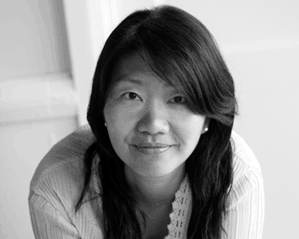 |
Ya-Hui Cheng (photo by Ponch Hawkes)
|
* Editor’s note: The Flaming Beacon is a professional, specialist, international lighting design practice based in Melbourne, Australia, operating under the design direction of Nathan Thompson. from http://www.tfb.com.au/index.htm
From an Interior Designer to a Lighting Designer
Q: What made you decide to switch directions from interior design to architectural lighting design?
A: Interests. When I studied in the Interior Design Department in Chung Yuan Christian University, there was a course about lighting design. The teacher who taught that course finished his education in the US and followed the IES system. He asked us to make small models to test different light and color to see how the feelings and emotions of people changed according to different light scenes. That was how I built up my interests in lighting design.
Q: Your background is interior design. Does it have any influence on your lighting design career?
A: Definitely and your question is a very interesting. When I was an interior designer, I always saw light from an interior design’s perspective. Later on when I became a lighting designer, my point of view has changed. Using the lighting cove as an example, the interior designer would prefer that the size of the cove as small as possible, however the lighting designer believes the larger the better for the lighting distribution. (Laugh)
Another example is if there is a linear element in the space, an interior designer would tend to express that linear element with light. But looking at it from a lighting designer’s point of view, we only express it when there is a need. When you consider a space with light, you need to think about the composition and the balance of the light. Is it really necessary to express the line? We would reconsider it.
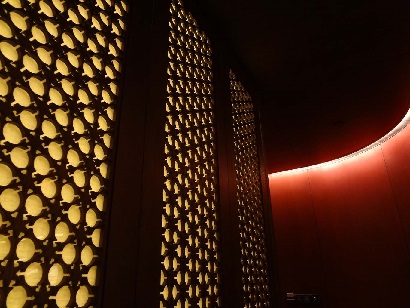 |
2013-01 Diaoyutai arts hotel Beijing, guest room
Composition of primary glowing lattice wall and secondary linear soft wall washing. (photo by Ya-hui Cheng)
|
Experiences in TFB
Q: What’s your company’s specialty?
A: Exquisite residences and luxury commercial space such as hotels. We have done some Taiwanese projects with SHIATZY CHEN (夏姿, fashion), Cindy Chao (jewelry), Cha Cha (tea shop) and Regent Hotel refurbishment. The design for this kind of space requires a high standard in quality, and therefore is necessary for the clients to ask lighting designers for professional assistance.
Q: Are projects you have done from all over the world?
A: Yes they are. We always do some research to understand every culture before we start. The main reason is that we not only do lighting design but very often we design custom design light fittings for each project. The styles and shapes of the customized luminaires are very important as it is one of the visible elements in the space. In order to find the best solution, we would investigate the local artifacts so we can show the spirit of it in our luminaire design and to be aware if certain shapes are taboos by the locals.
Q: What do we need to pay attention to when we design this type of space?
A: Atmosphere is everything. It is very important to control the atmosphere and to have customers enjoy the spirit of the space. There is a film called “Lost in Translation” and it fully represents what we want to express and what experiences we would like to bring to our customers. When the protagonists walk into this space, they will forget about where they are from and their background stories. They just fully enjoy what the space has to offer.
Q: How can you achieve this? How do you make people forget about themselves? Do we need to make them feel relaxed or to create an exotic atmosphere?
A: It is difficult to give a clear answer. There are many aspects involved in it including service, space design, art decoration and, of course, the lighting. Lighting is only one part of the whole experience. What’s most important is that we want to make people feel they have arrived somewhere special. And the atmosphere should be comfortable and not overpowering. Relaxation is often the main element. This question is connected to many factors so it’s not easy to answer in a sentence as each hotel has its own theme for lighting designers to follow and express.
Q: Do you design customized luminaires for every project?
A: Almost. Except a few residential projects because the numbers of residential luminaires are not big enough so the cost would be too high to customize the fitting. However, if it is necessary, we would do. Take a double height staircase for example, feature lamps are applicable for such a case.
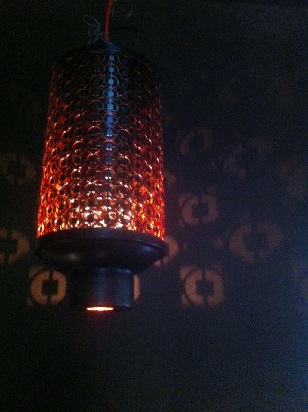 |
2012-07 Ancient hotel Shanghai custom fitting design in guest room. (photo by Ya-hui Cheng)
|
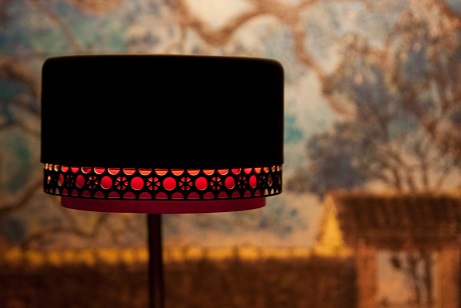 |
2013-01 Diaoyutai arts hotel Beijing, custom fitting design in guest room (photo by Andrew Jaques)
|
Q: Do you have a huge database regarding decorative light fittings? How do you establish it?
A: From the internet, Frankfurt messe and mainly from Milan Furniture Show. There are also many international lighting fixture agents in Melbourne and they often come to our office to show us new products.
Projects and Works
Q: You have done projects of various scales in China, Dubai, Indonesia, Macau, Malaysia, Singapore, Taiwan and Thailand. Are there some different requirement regarding light?
A: Every country possesses its own preference. For example, general speaking Chinese prefer brighter lighting, and we all know that’s because they like cheerful and bustling atmosphere.
Q: Have you ever tried to persuade them not to be so bright?
A: (LAUGH) We would try, and we would also set some light scenes for them to choose. Brightness is a personal preference. The young generation can accept low brightness and high contrast, but the older generation prefers brighter spaces. Yet this is not always the case, some elderly gentlemen like the light to be dimmed when they smoke cigars.
Q: When you worked with Chinese clients, is it easier in terms of communication or vice versa?
A: (smile) I understand better what Chinese clients want. When there is misunderstanding in the cultural interpretation, I would try to explain more to my workmates and normally they will understand as they respect every single culture. We would also put into consideration if the hotel is designed for local people or for foreigners.
Q: What is the most impressive project you have participated in?
A: It’s a project in Beijing, the building is designed by Ando Tadao. It’s a building complex constituted by art museum, hotels and hot springs resort and its location is on the opposite site of Beijing Guozhijian [note*] which is in a cultural district. You can see simplicity, refinement, and purity in Ando Tadao’s architecture so the best space here would be the meditation room as Ando turns complexity into simplicity, and simplicity into the sublime.
* Editor’s note: Guozhijian, also “Imperial Academy,” was a traditional institute for education and national examination. An emperor of ancient China established this institute around 1500 years ago, and it had functioned as Ministry of Education now until Qing Dynasty ended. The Beijing Guozhijian is the very last one Guozhijian building in mainland China.
Q: How about the lighting for this space? Is there anything special you would like to mention?
A: We need to hide all lighting fixtures. Authorities especially requested that they don’t want to see any spill light on the outer façade. For example, when it comes to balcony lighting, Ando requested that the light can only partially land on the table or the needed area. There shouldn’t be any glowing from the lighting fixtures.
The interior design team of the hotel, Layan Design Studio, is based in Melbourne and the interior designer is German. He is very familiar with the Chinese design elements such as window lattice works. He always surprises me with his creativity in regards to the arrangement of space. We worked closely with them to harmonize the lighting with the interior style.
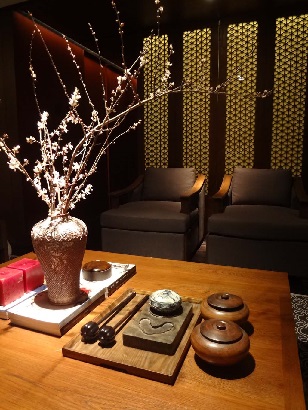 |
2013-01 Diaoyutai arts hotel Beijing, guest room . Lighting highlights the arrangement of space. (photo by Ya-hui Cheng)
|
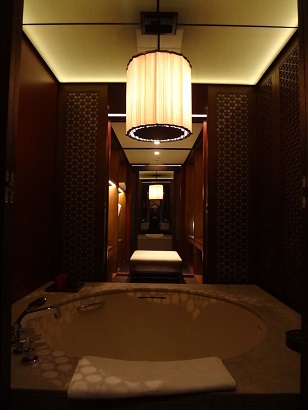 |
2013-01 Diaoyutai arts hotel Beijing, guest room. Lighting and interior design are in harmony (photo by Andrew Jaques)
|
Q: It sounds like you need to spend quite an amount of time on every project. Do you have sufficient time for all of them?
A: Some yes. For most of the projects, we need sufficient time in order to complete them. You can’t hurry in the design process of grand hotels. It is necessary to spend quality time on doing research and conclude a smart design strategy.
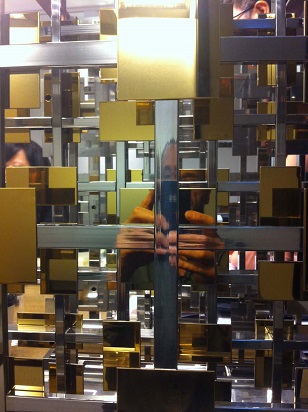 |
2013-10 Regent Hotel Taipei , design study on lighting and material (photo by Nathan Thompson)
|
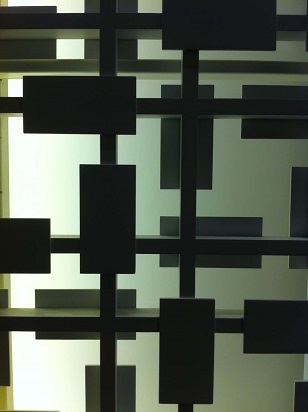 |
2013-10 Regent Hotel Taipei , design study on lighting and material (photo by Nathan Thopmson)
|
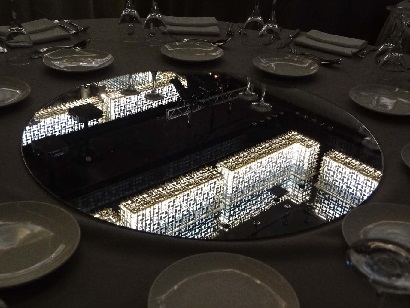 |
2013-10 Regent Hotel Taipei, design study on lighting, material and space (photo by Ya-Hui Cheng)
|
Q: What is your favorite project?
A: The Ancient Old Hotel in Shanghai. They moved many hundred-year-old wooden crafted houses from different places in China to Shanghai and formed this hotel. They deconstructed the houses before moving and then re-constructed them again on the site. This is a very challenging project as all the columns and beams were not allowed to have any holes drilled in them. We have to find the ways to deal with it. Therefore, many of our decorative fittings became architectural fittings. The fittings have two tasks – one for decoration and one for architectural lighting. To design one fitting for two tasks is quite challenging. By the way, the hotel is designed by Denniston in Malaysia.
 |
2011-03 Ancient hotel Shanghai mock up room. It is the challenging project due to the conservation of Chinese ancient wooden house .(photo by Ya-hui Cheng)
|
Points of View
Q: You have been working for this company for 7 years. During this time, LED also improved a lot in many aspects. How often do you use LEDs in your projects?
A: LEDs are often used by us as linear lighting. We have used T5 before, now they are replaced by LED in most of application. However, when it comes to spotlight or lighting for art works or feature objects, we still love to use Halogen lamps because the character of the light is more consistent than LEDs. In some cases, the client will replace the Halogen light source to LED. Then we found that the LED substitute light often appears a bit greenish, bluish or pinkish. It changes the atmosphere. Therefore, with the technology we are having now, we would recommend our clients to use energy saving Halogen. In the future, when the light quality of LEDs can perform as well as halogens with acceptable price, they can be retrofitted by LED. At the moment, in order to sustain the quality and dimming ability of these international projects, we still prefer to use energy saving Halogen as accent light source. The cost of Halogen lamps is cheaper than LEDs. The dimming system can also makes it possible to save energy.
Q: We also need dimming possibility for LEDs. Have you ever encounter difficulty when dimming LEDs?
A: There are some problems when it comes to dimming LEDs. Each linear LED has a different dimming curve that need to be understood beforehand. For example, some have a really uneven dimming curve – 100% to 50% is not that obvious, 50% to 10% is also not obvious, nor is10% to 5%, but 5% to 1% suddenly drops to very dark. We need to test this before and make sure it’s even.
Q: As a Taiwanese, what is the biggest challenge you encounter when working in Australia?
A: I think it is the way you communicate with people from different countries with different cultural background. I am now in our company where my colleagues are from Germany, Australia and other countries. We Taiwanese are used to be humble and polite socially, but we are direct in terms of study or working performance. In my generation, from the perspective of education in Taiwan, criticism from teachers or the seniors was mostly accepted. We take comments inward and find solution for improvement. Here, it’s recommended to show the juniors how to do a better job and explain why it is more appropriate instead of telling them the work is not up to speed. There is also different level of understanding the real meaning of what people try to communicate. For example, if people response "Maybe" in return to your invitation, 90% of the time, it means "No" in Australia.
Q. You have experience working in Taiwan and in foreign countries. If you have the chance to choose again, where would you prefer to stay? Why?
A: Foreign Countries. The main reason is the different perspectives and management method. If I stayed in Taiwan, I would probably have followed the traditional way of reprimanding others when they do something wrong. Here, they use different ways to encourge people because everybody possesses different cultural backgrounds.
Also, people here are more open to different ways of thinking. If I have some crazy ideas, it’s more possible to be accepted here. I attend concerts and exhibitions in Melbourne very often and there are more non-mainstream art ideas here. I love the vivid art works as they enlarge my views and broaden my horizons in my sensitivity.
However, Taiwan is still my hometown, where I grew up. In the future, though, I would love to share what I have learned in the lighting industry to the next generation of designers in Taiwan.





















